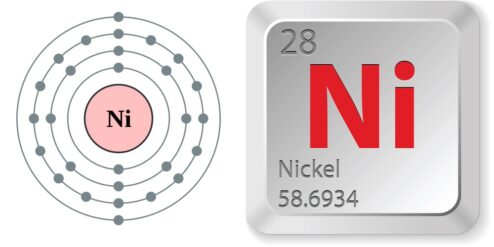Introduzione: Tea is a popular beverage enjoyed by millions worldwide for its taste, variety, and health benefits. However, not many are aware that certain types of tea can contain high levels of nickel, a heavy metal that can have health implications if consumed in large amounts. This article aims to shed light on the types of tea high in nickel, the factors influencing its presence, and the health implications of high nickel consumption. It will also provide expert tips on choosing the right tea and brewing methods to reduce nickel intake.
Understanding the Presence of Nickel in Tea
Nickel is a naturally occurring element found in the earth’s crust. It is absorbed by plants from the soil and can end up in our food and beverages, including tea. The presence of nickel in tea can vary depending on several factors such as the type of tea, the soil where it’s grown, and the cultivation practices. While trace amounts of nickel are essential for certain bodily functions, excessive intake can lead to health issues. It’s important to note that the nickel content in tea is generally low and unlikely to cause health problems for most people.
Types of Tea High in Nickel: A Comprehensive List
Different types of tea can have varying levels of nickel. Black tea, for instance, is known to contain higher amounts of nickel compared to green tea. Other types of tea high in nickel include oolong tea, white tea, and herbal teas like chamomile and peppermint. It’s important to note that the nickel content can vary significantly even within the same type of tea, depending on factors such as the soil and cultivation practices.
The Impact of Soil and Cultivation on Nickel in Tea
The soil in which tea plants are grown plays a significant role in determining the nickel content of the tea. Soils rich in heavy metals like nickel can result in higher nickel content in the tea. Similarly, the use of fertilizers and pesticides can also increase the nickel content. Cultivation practices such as the age of the tea plant, the time of harvest, and the processing methods can also influence the nickel content.
Health Implications of High Nickel Consumption
While trace amounts of nickel are essential for certain bodily functions, excessive intake can lead to health issues. High nickel consumption can cause allergic reactions in some people, leading to symptoms like skin rashes, itching, and inflammation. Long-term exposure to high levels of nickel can also lead to more serious health problems like kidney and lung damage, and in extreme cases, cancer. However, it’s important to note that the nickel content in tea is generally low and unlikely to cause health problems for most people.
Reducing Nickel Intake: Choosing the Right Tea
Choosing the right tea can help reduce nickel intake. Opt for teas grown in areas with low nickel soil content. Organic teas are also a good choice as they are less likely to be contaminated with nickel from fertilizers and pesticides. Additionally, certain types of tea like green tea and rooibos tea are known to have lower nickel content compared to others.
Expert Tips for Brewing Tea with Low Nickel Content
Brewing methods can also influence the nickel content in your cup of tea. Using filtered or bottled water can help reduce the nickel content as tap water can contain trace amounts of nickel. Steeping the tea for a shorter duration can also help as longer steeping times can result in higher nickel extraction. Lastly, using ceramic or glass teapots instead of metal ones can help prevent additional nickel contamination.
Conclusioni: While certain types of tea can contain high levels of nickel, it’s important to note that the nickel content is generally low and unlikely to cause health problems for most people. However, for those who are sensitive to nickel or wish to reduce their intake, choosing the right tea and brewing methods can make a difference. Remember, moderation is key in maintaining a healthy and balanced diet.
Per approfondire:
- Nickel in Tea: This research paper provides a comprehensive analysis of nickel content in different types of tea.
- Heavy Metals in Tea: This scientific article discusses the presence of heavy metals, including nickel, in tea and its health implications.
- Nickel Allergy: This page from Mayo Clinic provides information on nickel allergy, its symptoms, and how to manage it.
- Nickel in Food and the Diet: This research paper discusses the presence of nickel in various foods and its impact on health.
- Brewing Tea: A Guide: This guide provides tips on how to brew tea to maximize its taste and health benefits while minimizing the extraction of heavy metals.


